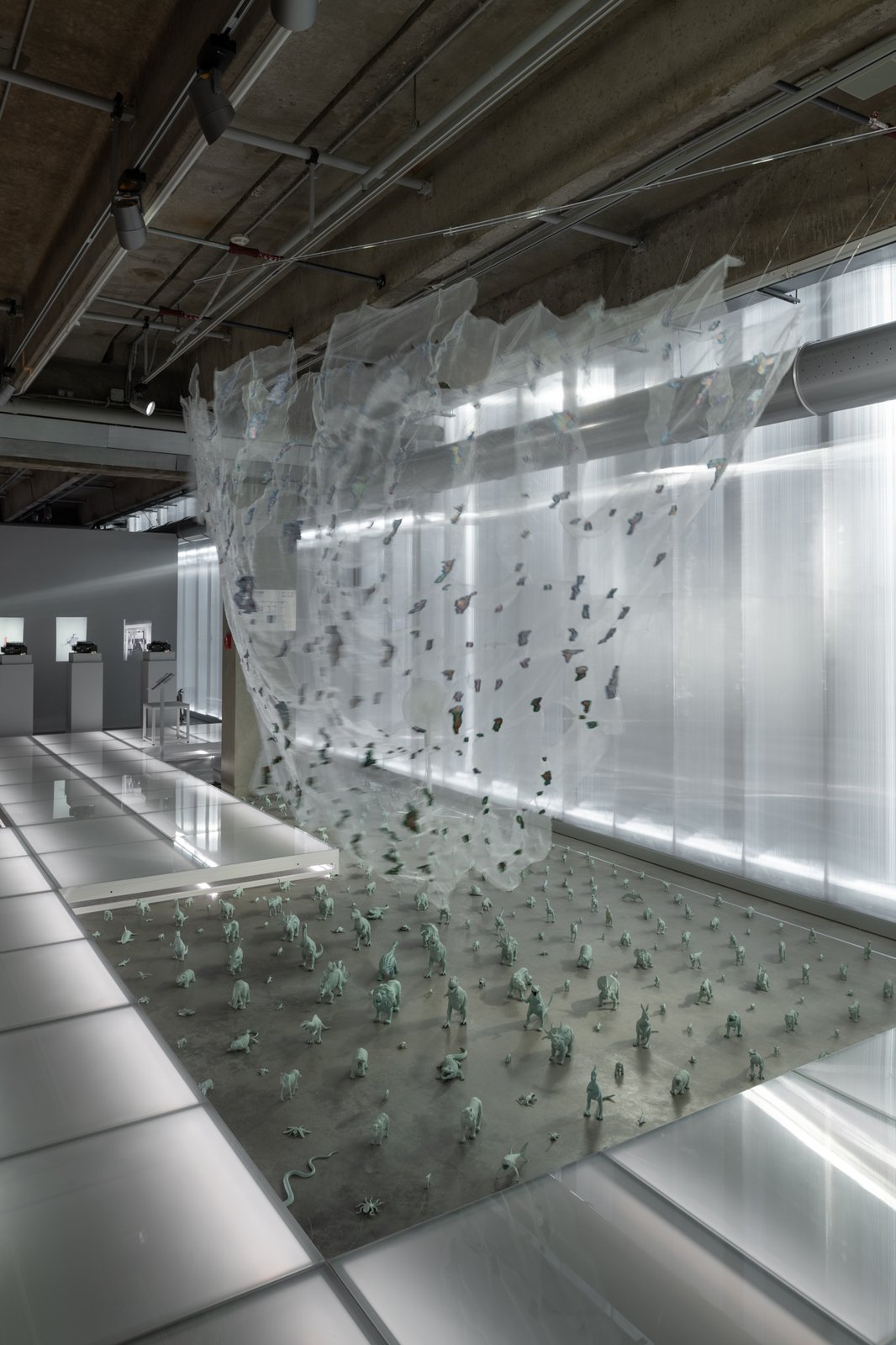Fedora Akimova


Fedora Akimova
Antianthrop, 2020–2021
Tulle, hand embroidery, plastic animal figures, fan
Dimensions variable
Courtesy of the artist
The formal qualities and poetic agency of Fedora Akimova’s work are reminiscent of Hans Haacke’s famous installation Blue Sail (1964–1965), in which a piece of blue chiffon floats in the air and “breathes” like a living creature. Like Haacke, Akimova does not romanticize pristine nature. On the contrary, Antianthrop is an unsettling meditation on the post- or non- human perspective; an invitation, in the words of speculative realist philosopher Graham Harman, to a “zero-person” conversation. Hand embroidered landscapes on tulle present worlds abandoned by Homo sapiens or, perhaps, those who preceded us on this planet. Decolorized toy dinosaurs and animals draw our attention to some of the results of evolution’s “irrational” creativity and remind us that humans are just one of its accidental products.
The shimmering of the iridescent “membranes” in Akimova’s work is a reference to Alex Garland’s film Annihilation (2018). In the film and its literary source, the eponymous novel by New Weird author Jeff VanderMeer (who, like Harman, is inspired by Lovecraftian horror), a force meant to prevent an ecological disaster is sent to Earth, but a mistake leads to fascinating and horrifying genetic mutations: nature is no longer under human control.
Both Annihilation and Akimova’s new work address ancient panpsychic fears of the Anthropocene: human helplessness before the vital force of rebellious Gaia, which turns us into animals or grows flowers through our bodies, refuses us our wholeness and breaks through our corporeal boundaries. In Investigation of Horror, Soviet writer and philosopher Leonid Lipavsky explained the fear of the force of life as one of “viscous consistency, of colloids and emulsion; a fear of heterogeneity in which short-lived structures, clots, cords, threads of tension, and unstable independence emerge. Substances and environments that can evoke fear and disgust, include dirt, bogs, fat (especially viscous fats such as cod-liver oil or castor oil), slime, saliva (spit, mucus), blood, all products of glands, including seminal fluid; protoplasm in general. The latter deserves to be discussed separately. We are squeamish about living plasma for a reason. Life is always essentially viscous and murky. A living substance is one of which we cannot definitely say whether it is one creature or several. Now you see one knot in the plasma, and now there are two. Life fluctuates between the definite and the indefinite, individuation and non-individuality. This is its essence. In higher forms of life this aspect might be hidden, but it never disappears. This means that, first, there is something disgusting in every living creature, and second, a large number of creatures are clearly disgusting, which evokes groundless fear.”
IV